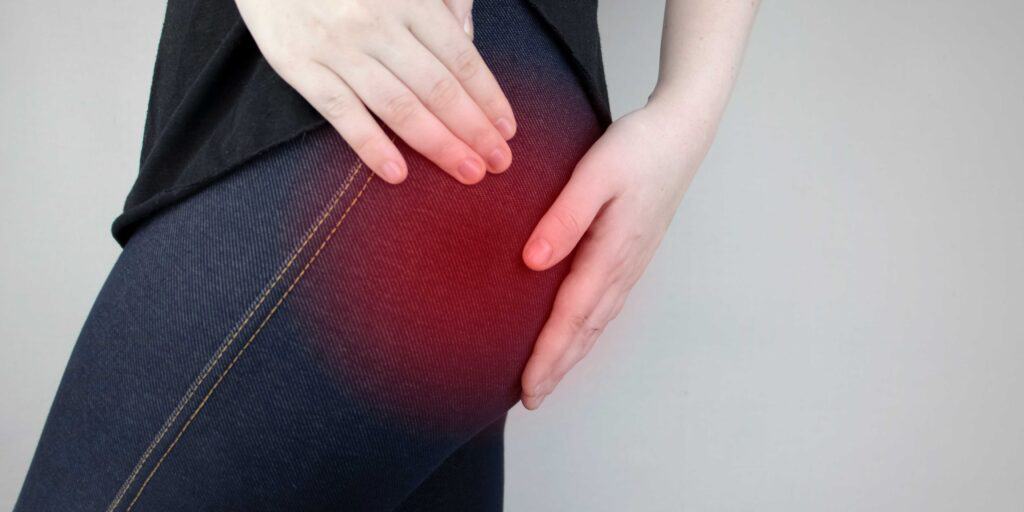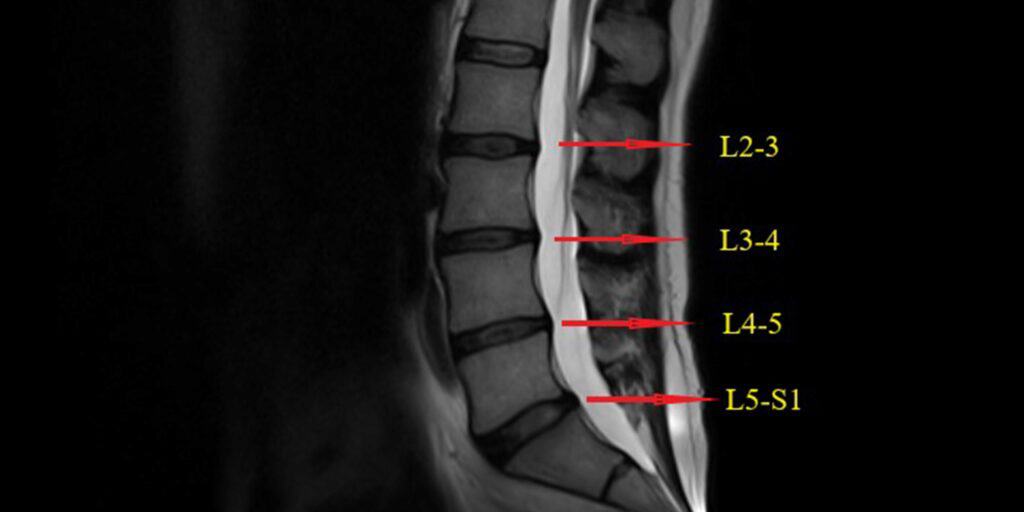If you’re like many adults, you experience pain in your lower back and buttocks at some point.
Lower Back and Buttock Pain can range from subtle, continuous discomfort to a sharp, sudden agony. It can develop quickly as a result of an accident or fall, or it can develop gradually over time.
While there are many ways to treat this type of pain, it’s important to first understand what may be causing it. If you’re experiencing discomfort in this area, it’s best to speak with a doctor to find the root of the problem and get started on the best treatment plan for you. Don’t let this pain stop you from living your life to the fullest.

The most common causes of lower back pain are mechanical or structural problems with the spine, spinal discs, muscles, ligaments, or tendons. Other common causes of back pain include inflammatory conditions, such as rheumatoid arthritis, and other medical conditions, such as osteoporosis, fibromyalgia, kidney stones or infections, endometriosis, and tumors. Pregnancy is also a common cause of back pain.
Some of the treatments available for lower back pain include medications, injections, physical therapy, and surgery.
Medications can help relieve pain and inflammation. Over-the-counter pain relievers, such as ibuprofen or acetaminophen, can be used to treat mild to moderate back pain. Anti-inflammatory drugs, such as aspirin or corticosteroids, may be prescribed for more severe cases of back pain. Muscle relaxants may also be prescribed for certain types of chronic back pain.
Physical therapy can also help relieve lower back pain. Physical therapy may include exercises to strengthen the muscles in the back and stretching exercises to improve flexibility. Hot packs and cold packs can also be used to help relieve symptoms.
Surgery may be necessary for some people with severe lower back pain. Surgery may be needed to remove bone spurs, herniated discs, or other tissues that are causing compression or irritation of the nerves.
There are a few preventative measures that can be taken for lower back pain. The first is to maintain good posture. When you sit or stand, make sure your back is straight and don’t slouch. You should also try to limit the amount of time you spend sitting or standing in one position. If you have to sit for a long time, take breaks to move around and stretch. Another important prevention measure is to stay at a healthy weight. Carrying too much extra weight puts unnecessary strain on your back. Finally, it’s important to exercise regularly. Stronger muscles help support your spine and can help prevent lower back pain from developing.
There are a number of root causes of lower back pain, but the most common is degenerative changes in the spine. As people age, the discs between the vertebrae can become worn and thin, which can lead to pain and stiffness. Additionally, arthritis can cause inflammation and pain in the joints of the hip and lower back. Injury or overuse can also lead to inflammation and pain in these areas.
The amount of time it takes for the pain to go away after treatment varies from individual to individual. Some people may experience relief shortly after treatment, while others may require more time. In some cases, back pain may not completely go away, but it can be managed with proper treatment and care. It is important to listen to your body and take things slowly when returning to normal activities. If you aggravate the injury by resuming certain activities too soon, you may only extend the pain.
Lower back pain in the butt region can be caused by a number of things but is most commonly associated with a muscle strain. This can be caused by overuse or injury, and often results in pain, stiffness, and reduced range of motion. Another common cause is referred pain from arthritic facet joints in the lower back. Other less common causes of lower back pain in the butt region can include Piriformis syndrome, which is a condition that results from compression or irritation of the sciatic nerve. This can lead to pain, tingling, or numbness in the buttocks and down the leg. This is caused by spasms or inflammation of the piriformis muscle and often leads to pain and discomfort in the hip and buttocks.

Lower back pain in the buttock region can be caused by a number of things, such as muscle weakness, poor posture, and even stress. Some common treatments for this type of pain include:
1. Physical therapy and exercise: Physical therapists can provide exercises and stretches that can help to ease pain and improve function. Exercises may also strengthen back muscles and help improve posture.
2. Rest: It is important to allow the body time to heal, so resting is often recommended when experiencing lower back pain in the buttocks. This may mean taking a break from your regular routine or at least slowing down.
3. NSAIDs: Non-steroidal anti-inflammatory drugs (NSAIDs) such as ibuprofen can help relieve pain and inflammation.
Lower back and flank pain above the level of the hip can be caused by various issues in the reproductive system or gastrointestinal tracts. The pain may vary in intensity depending on the underlying issue. Any problem in the abdomen can cause pain in the hip and flank area. The abdomen is a vigorous organ consisting of kidneys and bladder, pancreas, gallbladder, intestine (small and large), stomach, and liver. Slight disturbance or disorder of rational functions in these organs can cause massive pain in the abdomen. If you are experiencing lower back and flank pain above your hip, it is advisable to seek medical attention to rule out any serious underlying causes.
Treatment for lower back pain above hip can vary based on the underlying cause. If the source of the pain isn’t clear, you may need one or more diagnostic screenings, like an MRI, X-ray, or blood tests, to help determine the best course of action. Treatment options can range from conservative measures, like rest and physical therapy, to more aggressive treatments, like surgery. The goal of treatment is to relieve pain and restore function.
Lower back and flank pain above the hip can be caused by a number of conditions, including muscle strains, problems with abdominal visci, back arthritis, or a herniated disc. However, there are ways to prevent lower back pain from happening again. First, it’s important to maintain good posture and alignment when sitting, standing, and moving. This will help to prevent strain on the muscles and ligaments. Second, regular exercise is important for strengthening the muscles and keeping the joints healthy. Third, it’s important to eat a healthy diet to manage weight problems. Lastly, if you do experience lower back pain, it’s important to seek treatment early to prevent the condition from worsening. By following these tips, you can prevent lower back pain from becoming a chronic problem.
It is necessary to see a doctor for lower back pain and flank pain above the hips if you are experiencing any of the following symptoms: loss of bladder or bowel function, sudden, severe pain, weakness or loss of sensation in your lower body, or pain accompanied by fever, clammy skin, a rapid heart rate, nausea, vomiting, or any other concerning symptoms.
If you’re experiencing a sharp, shooting pain on one side of your lower back and hip, it could be caused by a number of conditions, including muscle spasms, joint dysfunction, or nerve compression. Here are some of the most common causes of this type of pain:
Piriformis Syndrome: This condition occurs when the piriformis muscle – a small muscle located in the buttocks – becomes tight or spasms. This can compress the sciatic nerve, causing pain in the lower back and hip.
Sacroiliac Joint Dysfunction: This condition affects the joints that connect the sacrum (the triangular bone at the base of the spine) to the hip bones. It can cause pain in the lower back and hip due to inflammation or instability in the joints.
– Chronic Lower Back Pain: As the name suggests, this is simply ongoing pain in the lower back that can be caused by a variety of factors, including muscle strains, poor posture, degenerative disc disease, and spinal stenosis.
– Lumbar Herniated Disc: This condition occurs when one of the discs in your spine becomes damaged and begins to bulge out. This can put pressure on nerves and lead to pain in the lower back and hip.
– Spinal Stenosis: This condition is caused by a narrowing of the spaces between your vertebrae, which can put pressure on your spinal cord and nerves. This can lead to pain, numbness, or weakness in your lower back and hips.
– Scoliosis: This is a sideways curvature of the spine that can occur due to congenital defects or other conditions. It can cause pain in the lower back and hips as well as fatigue and difficulty breathing.
– Spondylolisthesis: This condition occurs when one of your vertebrae slips out of place. This can put pressure on nerves and cause pain in the lower back and hip.
Lower back and hip pain on one side of the body can be indicative of a number of different conditions. Some of these conditions are more serious than others, and some may even be considered medical emergencies. For example, high-risk causes of lower back and hip pain on one side include internal organ diseases such as kidney failure, kidney diseases, and advanced kidney infections. Another high-risk condition is cauda equina syndrome, which is a condition that affects the nerves in the lower back and can lead to bowel and bladder incontinence and even paralysis in the lower body. If you are experiencing lower back and hip pain on one side of your body, it is important to seek medical attention so that a proper diagnosis can be made.

Treatment for lower back and hip pain on one side varies greatly depending on the underlying reason, which is why a precise diagnosis is crucial.
Before making a diagnosis, a doctor will usually perform a physical exam, obtain a medical history, and go over the patient’s symptoms. CT scans, X-rays, MRIs, and ultrasounds are all useful tests.
If nonsurgical methods are unsuccessful in relieving pain, surgery may be considered. The type of surgery depends on the underlying cause of the pain. For example, if the pain is caused by a pinched nerve, surgery may involve decompressing the nerve. If the pain is caused by a herniated disc, surgery may involve removing the disc or part of the disc. Surgery is typically only recommended as a last resort after all other nonsurgical treatments have failed. lower back and hip pain on one side can be a debilitating condition that significantly impacts your quality of life. Surgery may also be necessary for certain surgical emergencies as detailed above. If you are experiencing lower back and hip pain on one side, contact us to discuss your treatment options.